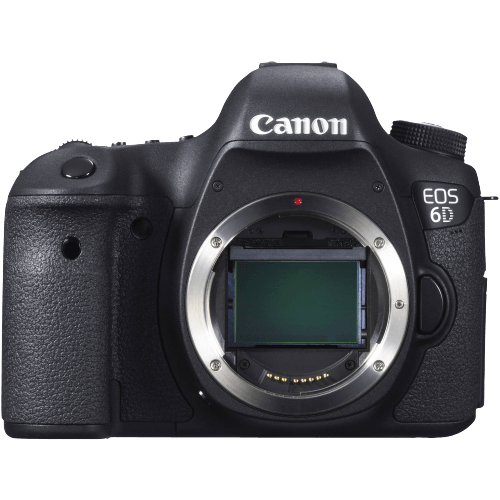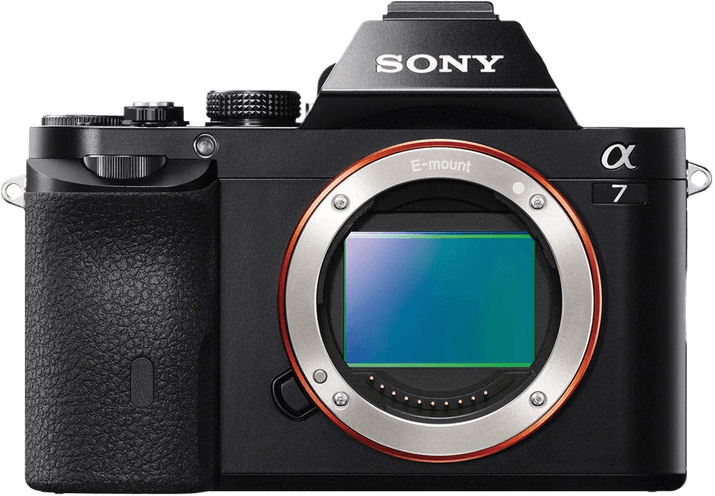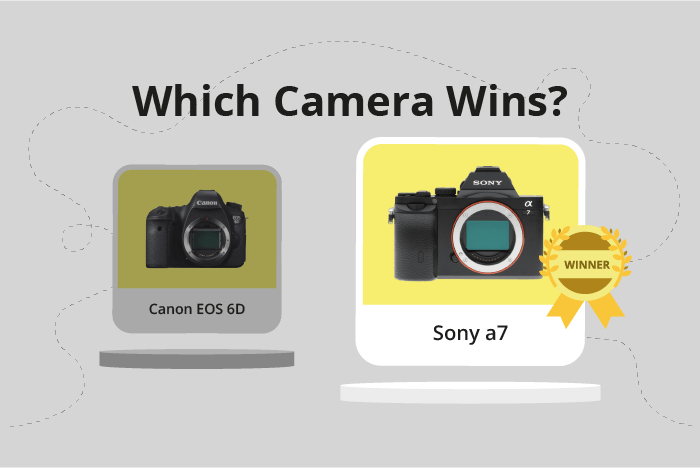Canon EOS 6D vs Sony a7 Comparison
Canon EOS 6D

Sony a7

The Sony a7 emerges as the winner with a score of 63/100, while the Canon EOS 6D lags behind at 59/100. Both cameras, released in 2013 and 2012 respectively, are equipped with full-frame sensors. However, the Sony a7 has the advantage of being a mirrorless camera, making it lighter at 474g and more compact with dimensions of 127 x 94 x 48mm. On the other hand, the Canon EOS 6D is a DSLR, weighing 770g and measuring 145 x 111 x 71mm.
Despite its higher score, the Sony a7 has a lower launch price of $1700 compared to the Canon EOS 6D’s $2099. This makes the Sony a7 not only a better performing camera but also a more affordable option. However, some users may still prefer the Canon EOS 6D for its DSLR design, which offers a more traditional photography experience. Ultimately, the choice between these two cameras comes down to personal preference and priorities, as both have their own unique advantages.
Canon EOS 6D vs Sony a7 Overview and Optics
The Sony a7 wins the optics comparison with a score of 70/100, while the Canon EOS 6D scores 61/100. Both cameras share some specifications, such as the CMOS sensor type, Full Frame sensor size, and the lack of image stabilization. However, the Sony a7 outperforms the Canon EOS 6D in several aspects, while the Canon EOS 6D has a few advantages of its own.
The Sony a7 has a higher megapixel count (24) compared to the Canon EOS 6D (20.2), which allows for more detailed images. Additionally, the Sony a7 has a faster shooting speed (5) than the Canon EOS 6D (4.5), enabling quicker capture of fast-moving subjects. The Sony a7 also has a higher DXOMARK score for its sensor (90) compared to the Canon EOS 6D (82), signifying better overall image quality.
On the other hand, the Canon EOS 6D has the advantage of using the Canon EF lens mount, which is compatible with a wide range of high-quality lenses. The Sony a7 uses the Sony E lens mount, which has fewer native lenses available. However, this might not be a significant disadvantage, as adapters can be used to attach a variety of lenses to the Sony a7.
To conclude, the Sony a7 outperforms the Canon EOS 6D in terms of optics, with higher scores in megapixels, shooting speed, and sensor quality. The Canon EOS 6D’s main advantage lies in its lens compatibility, but this may not be a major factor for some users. The choice between these two cameras will depend on the individual’s priorities and preferences.
Canon EOS 6D vs Sony a7 Video Performance
The Sony a7 takes the lead in video capabilities with a score of 56/100, outperforming the Canon EOS 6D, which scores 43/100. Both cameras share some common specifications, such as Full HD maximum video resolution and 1920 x 1080 maximum video dimensions. Additionally, neither camera has built-in time-lapse functionality.
The Sony a7 outshines the Canon EOS 6D in video performance due to its higher maximum video frame rate of 60fps, compared to the Canon EOS 6D’s 30fps. This higher frame rate allows the Sony a7 to capture smoother video, making it more suitable for fast-paced action or sports videography.
On the other hand, the Canon EOS 6D does not have any notable advantages in video capabilities over the Sony a7, as its lower frame rate of 30fps is not as versatile for various shooting scenarios. This limitation may be a drawback for those who prioritize video performance in their camera choice.
Taking these factors into consideration, the Sony a7 is the clear winner in terms of video capabilities, mainly due to its higher maximum video frame rate. The Canon EOS 6D, although a solid camera for other purposes, does not offer any significant advantages in this area. When it comes to video performance, the Sony a7 is the more versatile and capable option of the two cameras.
Canon EOS 6D vs Sony a7 Features and Benefits
The Canon EOS 6D and the Sony a7 both receive a feature score of 57 out of 100. Despite having the same score, each camera possesses different strengths and weaknesses.
Both cameras share some specifications, such as a 3-inch screen size, the lack of a touchscreen, WIFI capability, and no Bluetooth connectivity. However, there are notable differences between the two models.
The Canon EOS 6D boasts a GPS feature, which the Sony a7 lacks. This allows for easy geotagging of photos, making it simpler to track and organize images based on location. The GPS feature is particularly useful for travel photographers or those who wish to document their journeys. However, the EOS 6D’s screen resolution is lower than the a7’s, with 1,040,000 dots compared to the a7’s 1,230,000 dots. The higher resolution on the Sony a7 provides a clearer and more detailed display for reviewing images.
The Sony a7 has an advantage with its flip screen, making it easier to capture images from various angles and positions. This is especially beneficial for photographers who need flexibility when composing shots. On the other hand, the a7 does not have a GPS feature, which may not be as crucial for some users.
Both cameras have their unique strengths, with the Canon EOS 6D providing GPS functionality and the Sony a7 offering a flip screen and higher screen resolution. Choosing between these two cameras depends on individual preferences and the intended use of the camera. While the GPS feature may be more important to some photographers, others may prioritize the flexibility of a flip screen and a higher resolution display.
Canon EOS 6D vs Sony a7 Storage and Battery
The Canon EOS 6D outperforms the Sony a7 in storage and battery, scoring 45/100 compared to the Sony a7’s 21/100. Both cameras have one memory card slot and accept SD, SDHC, and SDXC cards. However, the Sony a7 also accepts Memory Stick Pro Duo and Pro-HG Duo cards, offering more storage options.
The Canon EOS 6D has a superior battery life, providing 1090 shots per charge, while the Sony a7 only offers 340 shots. The EOS 6D uses an LP-E6 battery, whereas the a7 uses an NP-FW50 battery. Neither camera supports USB charging.
Despite the Sony a7’s additional memory card compatibility, the Canon EOS 6D’s significantly longer battery life makes it the better choice for storage and battery performance. The Sony a7 falls short in this category, but its extra storage options may appeal to some users. Ultimately, the Canon EOS 6D is the clear winner in this comparison for its extended battery life and overall reliability.
Canon EOS 6D vs Sony a7 – Our Verdict
Are you still undecided about which camera is right for you? Have a look at these popular comparisons that feature the Canon EOS 6D or the Sony a7:

